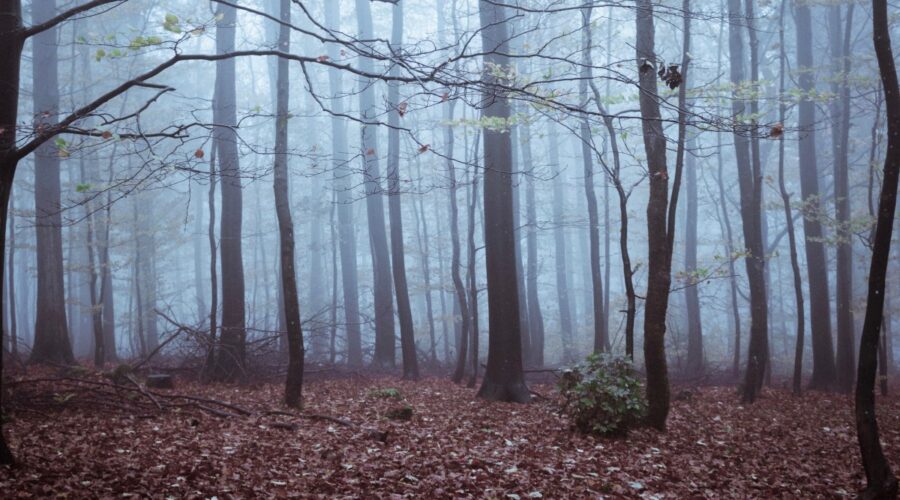When I’m on my balcony, it feels like I’m inside the crown of an old plane tree, enjoying the rustling leaves, the shade, and the fresh breeze on hot summer days. The tree is tall, reaching higher than the four-story building we live in. It was probably planted in the 1950s, like many other plane trees in Berlin. But this spring, fewer leaves have grown back, and many of those that have to appear withered, hanging loosely, already falling in the wind.
An increase in extreme weather events
Although many other trees in my neighborhood seem fine, I can’t help but wonder whether this is actually climate change unfolding in my own backyard. Berlin, like most parts of Europe, has experienced a number of record droughts and heat waves in a row. Both 2018 and 2019 brought the highest temperatures and lowest rainfall amounts ever recorded to date. This year, the same—or worse—is expected. Berlin had almost no rain this spring, large parts of Germany are suffering from extreme or extraordinary droughts (check out this drought monitor), and summer has yet to officially begin. Such extremes have been linked to climate change: a weakening of the jet stream as a result of warmer temperatures in the Arctic leads to weather conditions being “stuck” for a long time.
A forest health crisis
As we are coping with a public health crisis and I spend a lot of time on our balcony, where I look out at our sickly tree, I can’t help but wonder about this other health crisis. A crisis that isn’t caused by a single virus but by weather extremes in combination with other environmental stressors and drivers of devastation. Diseases and forest pests, like the bark beetle, thrive in warmer and drier weather. Droughts in 2018 and 2019 have also increased the number and scale of forest fires. Large populations of deer and wild boar cause damage and hinder the regeneration of forests – a common topic of discussion between foresters and hunters.
Forest management decisions also play a role, many of them dating back decades or hundreds of years. Due to its economic importance as a building material, spruce is the most common tree species in the country, occupying 26 percent of the forest area. Under natural conditions, spruce forests would grow in cool and moist climates, mostly in mountainous areas. In many parts of the country, however, these forests have been established near the edge of their ecological ranges and are not well adapted to local conditions – even without the effects of climate change. They are also typically planted in dense monocultures of a single group. All of these factors make spruce forests very vulnerable to this combination of weather extremes and stressors.
Forests across Germany are in a bad state
Looking at the statistics, forests all over Germany are in a bad state. The Federal Ministry for Food and Agriculture estimates that 245,000 hectares of forests have already been lost to pests, storms, and droughts. In a 2019 inventory in Brandenburg—the rural state surrounding Berlin—37 percent of forests were “considerably damaged,” having lost more than a quarter of their leaves or needles. The situation is particularly worrying for beeches and oaks and has worsened drastically since last year, with 62 percent and 66 percent respectively showing considerable damage. The situation looks similar in other German states as well. In Bavaria, trees had lost an average of 24.7 percent of their foliage in 2019, 3.4 percent more than in the previous year. Thuringia has been reporting catastrophic forest loss, with large areas of beech forests dying from a lack of water.
We run the risk of losing our forests
If change continues at this pace, over the 100+ years of a tree’s lifespan, ecological conditions will likely become unbearable for the types of forests that we know. Even beech and oak trees, Germany’s native and – what we thought – most resilient species, are suffering at the onset of this climate crisis.
Allowing forests to adapt and regenerate naturally is considered the best strategy to cope with change, but natural adaptation requires time, which we don’t have, and a strong and diverse mix of resilient tree species, which is rare in German forests. Foresters have started introducing non-native tree species such as cedars, chestnuts, or different types of oaks from Mediterranean regions, but these efforts are primarily happening at a small scale and in the context of research. If such diversity cannot be introduced quickly and at scale, we run the risk of losing our forests.
As we talk about our “new normal” in the wake of Covid-19, I wonder what the “new normal” will look like for forests. Without intervention, nature will run its course but won’t bring back the forests that we once knew. I fear that we will live in a landscape similar to the Mediterranean shrublands known as the Macchia, which were originally forests but degraded by thousands of years of excessive use and encroachment from livestock.
As for our plane tree, I still have hope that it can recover; I would really miss it.


